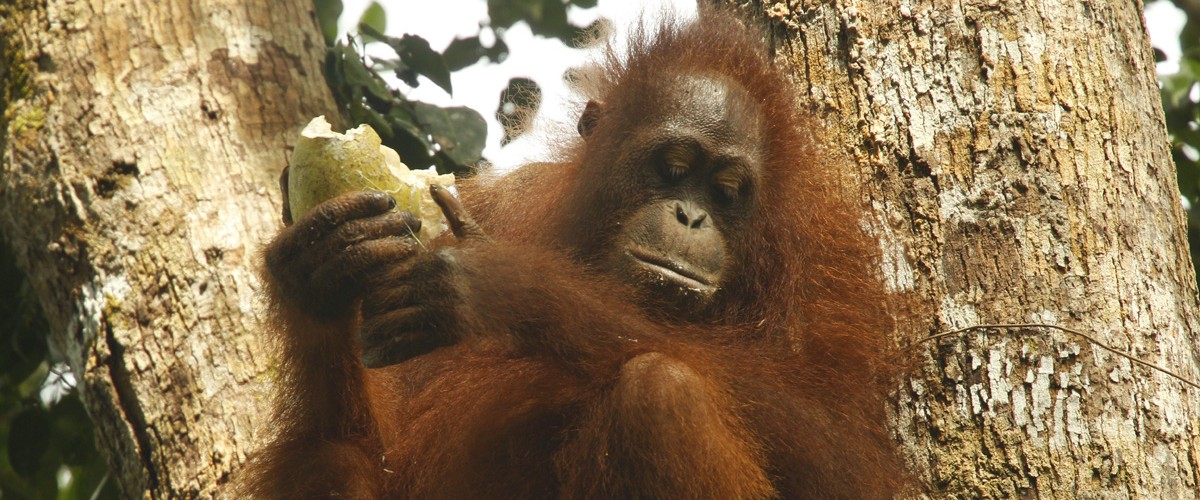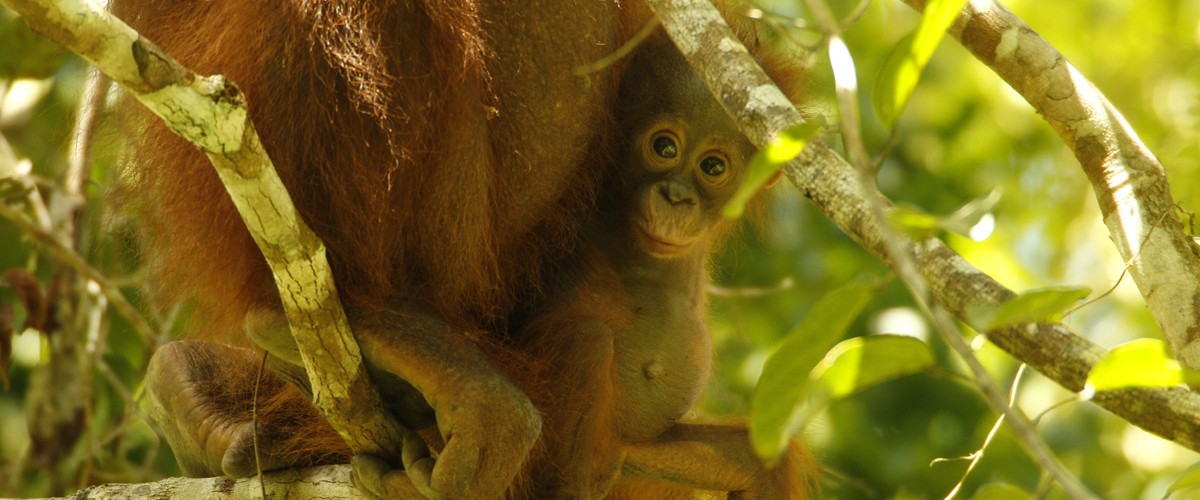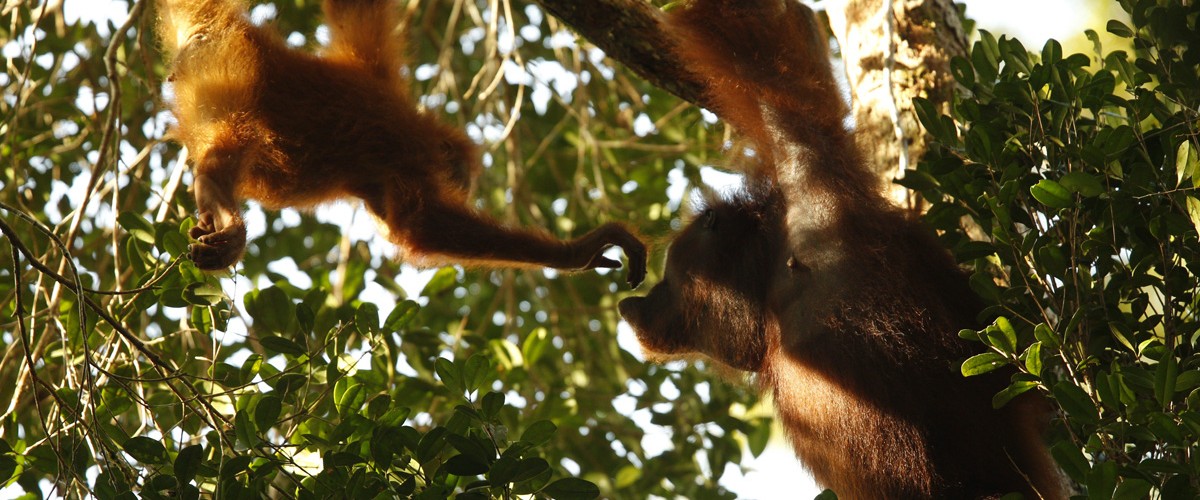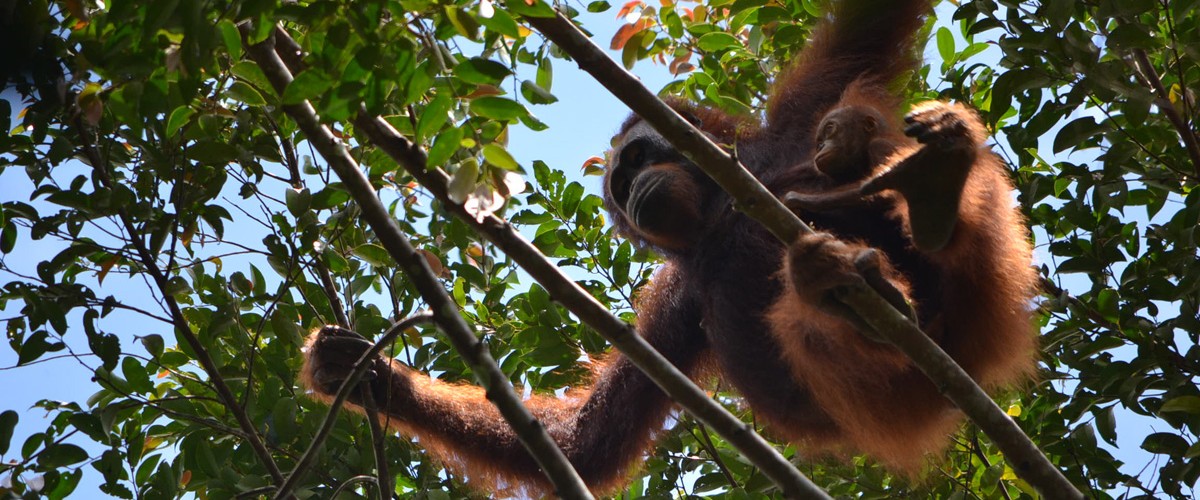By Sabta Pelari, Rangkong Research Coordinator
My name is Sabta and I now work as the Rangkong Research Coordinator for the Gunung Palung Orangutan Conservation Program (Yayasan Palung). Before I started in this role in January, I served as a Field Research Assistant for seven years. Now, I stay at the new Rangkong camp throughout the month to conduct scientific research and collect data that will help us better understand how to conserve orangutans living in degraded rainforests. Here, I explain some of the research we have been doing.

At the end of each month, we routinely carry out nest surveys at the Rangkong research area along eight different forest transects. Each transect is 1000 meters long. We also carry out phenology along 16 belts. Nest surveys are carried out by two field assistants, often accompanied by managers or students. Meanwhile, Randha, the Phenology Coordinator, focuses on collecting phenological data. We have been collecting this data for almost three years now, since even before we started following orangutans at the Rangkong. When we first started doing these surveys, we only slept on the ground underneath a tarp roof!
After the Rangkong camp construction finished in the beginning of 2022, it has never been empty since. We have employed the help of members of the Tanjung Gunung village (where I also come from) to stay at the camp on a rotating basis. This not only helps our project, but helps support the Tanjung Gunung economy and deters local people from engaging in poaching or illegal logging activities.
At the beginning of 2023, on January 23rd, to be precise, we started working at the Rangkong camp at full capacity. First, I, accompanied by two field assistants (Toto and Jaka) and one university student (Ilham), carried out nest surveys. After Ilham trained on these methods for three days, he replaced me to take nest survey data. Then, on January 25th, two trail cutters and one camp cook hiked up to camp.
On January 26th, Rizal (Research Manager), Pak Edi (the head trail cutter/porter from Tanjung Gunung), and two other trail cutters from Tanjung Gunung began making new transects in the Rangkong research area. The next day, I joined the group also. After working for one week, we were able to complete 8,100 meters of new trails! This new trail system will be essential to get around the research area, and search for and follow wild orangutans.

On February 2nd, Field Assistants Sahril and Dang searched for orangutans along the new transects, using the same method we use at Cabang Panti Research Station. From February 2nd-4th, I went back to Cabang Panti for some training on data collection and management.
On February 5th, back at the Rangkong area, I met up with more team members who walked down from Cabang Panti to work on a new passive monitoring project. This included Natalie Robinson (Program Coordinator), Herman (Field Assistant), Hendri Gunawan (Hutan Desa Coordinator), and Robi Kasianus (Hutan Desa Field Officer). Together, we installed and checked camera traps, bioacoustic recorders, temperature loggers, and rain gauges, which are placed in both the Cabang Panti and Rangkong areas. Hendri and Robi joined to learn about the monitoring process since we also have equipment to use in two of the Hutan Desa (Village Forests).
The next day, February 6th, I spent the morning with Natalie to learn about fecal sample collection and processing. Later that afternoon, Natalie left to return to Cabang Panti and I got ready to search for orangutans. Sahril and Dang had already been searching since 7:00 that morning. Not long after, I heard a loud call from the forest. I assumed this was either Sahril or Dang signaling their location to one another. But then, Natalie returned back to the Rangkong camp to inform me that there were orangutans eating Ficus fruit just about 300 meters from the camp, on the trail leading back to Cabang Panti. Together, we rushed back to this location and I called Sahril and Dang via radio to tell them about the orangutans. Natalie then continued the journey back to Cabang Panti while I followed a mother and infant orangutan, who were “partying” with an adolescent female orangutan. How exciting that the first time we followed orangutans at the Rangkong we saw three different individuals! Sahril, Dang and I worked together to follow these orangutans until they made a night nest.

Later, on February 17th, four more trail cutters and a substitute cook came to camp. After another eight days of work, we were able to complete about 80% of the new trail system! I hope that soon this area is just like Cabang Panti. Now, thanks to the new transects, as of March 17th, we have been able to follow orangutans a total of 45 times! As a community, we will protect the camp and the surrounding forest, and many people can gain economic benefit from working to help carry logistics to the camp on a rotating system. I am excited to be working in this new role, and can’t wait to see how the new camp and research continue to grow over time.
Management of Cabang Panti Research Station is conducted by the Gunung Palung National Park Office (BTN-GP) in collaboration with GPOCP/YP. Scientific research is carried out in conjunction with the Universitas Nasional (UNAS) and Boston University.









